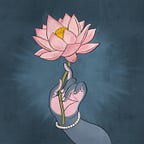Holi at Nathdwara
Nathdwara developed into a sacred town because of Shrinathji, and the entire cultural configuration of Nathdwara revolves around the temple. The main idol of the shrine does not belong to the cultural traditions of this area but was actually brought from Braj in the year 1672 about 640 km away from Nathdwara, to save the deity from religious persecution by the zealot Aurangzeb. The social network, relationships and the modes of living of the inhabitants of Nathwara are influenced by the seva-paddhati of the shrine, utsavas in the temple and religious ideas and practices of the Pushtimargiya tenets. Thus the whole town, as is developed today, owes its emergence to Shri Nathji alone. The town of Nathwara, minus Shri Nathji leaves nothing.
The principal Hindu festivals observed at Nathdwara with great pomp and show are the Holi in Phalgun, the Sil-Satami (in honour of Sitla) and the Gangaur sacred to Gauri, in Chait; the Akha-Teej in Vaisakh after the reaping of the wheat crop; the Rakhi in Śravana, the Teej in Bhadon being the anniversary of the day on which Parvati was, after long austerities, reunited with Shiva; the Dashera in Asoj in commemoration of the victory of Rāma over Rāvaṇa and the Diwali in Kartika. Holi acquired special prominence at Nathdwara because of its association with Braj and the typical manner in which Lord Krishna used to celebrate it at Gokul.
On the occasion of Holi the face of the Deity is smeared with gulāl (red powder). Songs and rasiyas are sung, The kirtankars go to the nearby hill (holi magra) in a procession — dancing and singing amidst resounding of guns. As the time for burning Holi arrives, the kirtankars return and the Holi is set on fire. Various substances are thrown into it. The children are very much in a mood to dance and they start collecting donations much in advance. The function concludes with the burning of the Holi. On Dol-Utsav, gulal is used in the temple for the pleasure of the Krishna, who was very fond of playing Holi. Inside the temple, each and every devotee is smeared with gulal and it seems as if the temple is overcast with red clouds. The Deity is made to wear white doriya clothes. A sandal-wood jhoola is brought in Dol-Tibari and the idol of Navneet Priya is placed into it. Swinging is called dol-jhoolana. The idols of Shri Nathji and Navneet Priya are smeared with gulal.
In the evening people move out in the form of a procession, headed by a bride and a bridegroom. A Brajvasi who has the hereditary right to act as Badshah accompanies the procession, along with camels, elephants, horses and the public at large. The Badshah imitates Birbal and the rulers of Jaipur and Jaisalmer. The procession circumambulates the temple (parikrama) on completion of which the rider comes to Govardhan Chauk and cleanses with his beard the nine steps of Surajpole. This is supposed to be the enactment of the mockery of a ruler, who is believed to have entered this temple to break the idol but lost his eye-sight due to divine intervention. Realizing the greatness of Krishna, he begged pardon, regained his eyesight and bowed to the Deity in such a manner that the floor was swept clean by his long beard. After the celebrations conclude, people go home, change their dresses and life goes back to normal.
Thus, we find that the average life of a citizen, residing at Nathwara has been turned, from birth till death and even beyond, into a cycle of ceremonies or sacraments which have added to it a little touch of beauty as well as holiness. These ritual acts punctuate the life within the family surroundings and give rise to a wide variety of taboos of a religious nature to be followed in society. Even the festivals and fairs are connected with religion. People gather together at Nathdwara only as a result of these religious ceremonies which provide to them opportunities for buying and selling special kinds of wares as well. Since this type of organization remains subjugated to the dominating influence of a ritual pattern, it gradually subsumes the life of those who live at Nathdwara into a ritual complex.
Excerpt from (with a few edits): Jindel, R. (1976). Culture Of Sacred Town: A Sociological Study Of Nathdwara. India: Popular Prakashan.
__________________________________________
If you find value in my work, I hope you consider becoming a patron or making a contribution to hindu.aesthetic@okicici. Hindu Aesthetic requires a lot of time and effort and your support would mean that I can continue bringing you the best possible content. ❤
